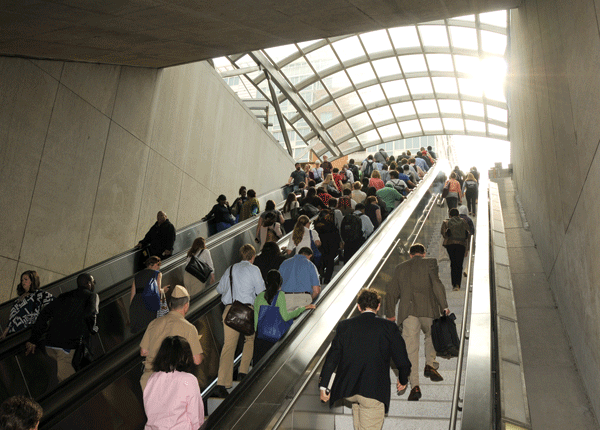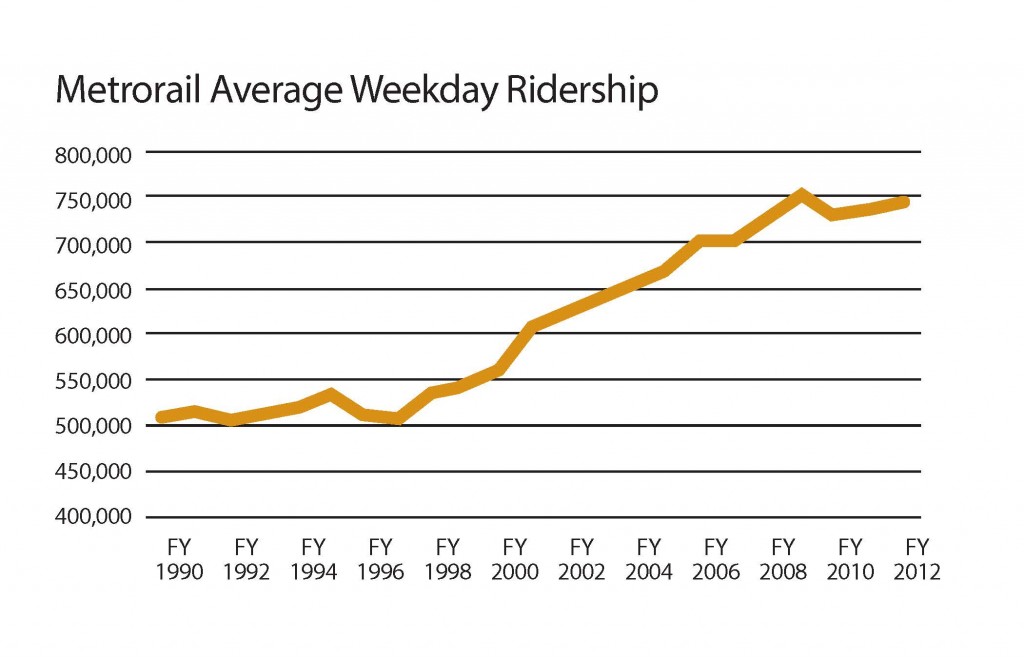Metro from the Beginning
In 1967, the federal government passed  a bill to create the Washington Metropolitan Area Transit Authority (Metro). The interstate Compact was signed by the District of Columbia, the Commonwealth of Virginia, and the State of Maryland. Metro continues to be chartered by this interstate Compact. Among all transit providers in the Washington region – which number more than 15 – Metro is unique in that it serves both states and the District. It provides the only truly regional transit network.
a bill to create the Washington Metropolitan Area Transit Authority (Metro). The interstate Compact was signed by the District of Columbia, the Commonwealth of Virginia, and the State of Maryland. Metro continues to be chartered by this interstate Compact. Among all transit providers in the Washington region – which number more than 15 – Metro is unique in that it serves both states and the District. It provides the only truly regional transit network.
In the late 1970s, Metro trains carried just over 100,000 passengers a day and served hundreds of thousands of passengers on the bus system. Since then, most rail stations in the core of the system have seen ridership more than double. As depicted below, rail average weekday ridership system-wide has gone from just over 500,000 in 1990 to almost 750,000 today, or 220 million trips annually, while weekday bus ridership has stayed at a stable level of roughly 450,000 daily trips, or 134 million trips annually.
 Today, Metro is the largest and most-patronized transit provider in the Washington region, delivering more than 1.2 million safe, clean and reliable trips each day to a population of 4.6 million within a 1,300-square-mile area. Metro operates the second busiest heavy rail transit system, sixth busiest bus network and fourth busiest paratransit service in the United States.
Today, Metro is the largest and most-patronized transit provider in the Washington region, delivering more than 1.2 million safe, clean and reliable trips each day to a population of 4.6 million within a 1,300-square-mile area. Metro operates the second busiest heavy rail transit system, sixth busiest bus network and fourth busiest paratransit service in the United States.
Additionally, the Washington region itself is growing and the reliance on transit is growing at a pace equal to or greater than general growth trends.
- MWCOG’s 2007-2008 household travel survey found that 17 percent of the region’s commuting trips are on transit – more than three times the national average.
- In the region’s core, 43 percent of workers use transit to get to work.
- Non-work trips on Metrorail are on the rise, and approximately 17 percent of weekday Metrorail trips are conducted for non-work reasons (entertainment, shopping, etc.)
For more information:
Download both the full Momentum plan and the Executive Summary.
Regional support is important to making Momentum a reality! A number of regional stakeholders have already endorsed Momentum. Please sign on and add your name to endorse Momentum and send the message that public transit is vital to the National Capital Region.


Yeah, but how many more trips than 1.2 million aren’t reliable?